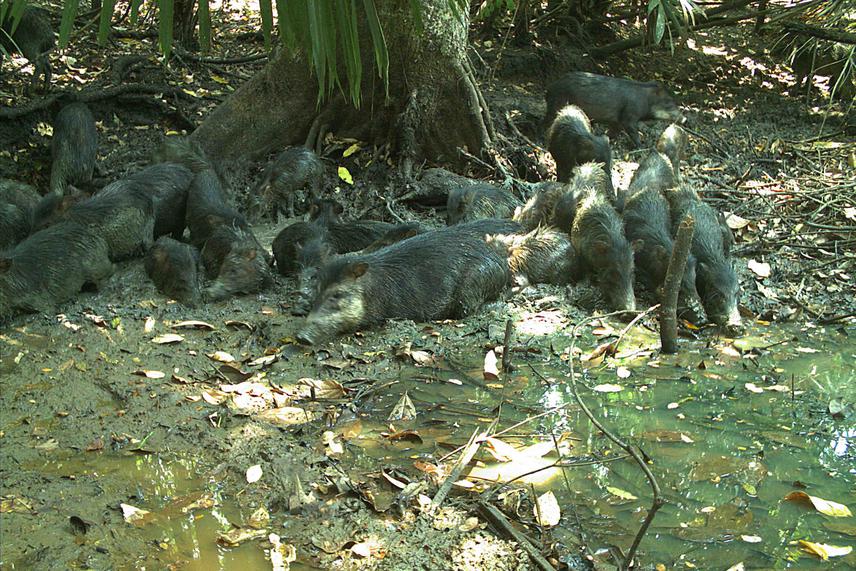Jose Fernando Moreira Ramirez
Other projects
19 Jan 2018
Conservation of an Endangered Social Species: The White-Lipped Peccary (Tayassu pecari) in a Community Forestry Concession in the Maya Biosphere Reserve
Evaluate the precision of the ecological constraints model in the WLP and examine the relationship between group size, frequency of movements and home range related to food availability in the Selva Maya

White-lipped peccaries (WLP) are disappearing in Mesoamérica. The range-wide population reduction of WLP 1987-2005 was estimated at ~30%; however, during the same time period, reductions from historic range were estimated at 84% for Guatemala and México. Research on the WLP in the Selva Maya is urgently needed to determine its ecology and assess its importance for natural ecosystems. After the Amazon, the Selva Maya in Mesoamérica is the largest remaining tropical rain-forest in the Americas. The area includes a 13.3 million-acre forest that stretches across Belize, northern Guatemala, and throughout Mexico’s Yucatan Peninsula.
Understanding the spatial and temporal dynamics of landscape use by species is fundamental for ecosystem management and evaluating the capability of protected areas to maintain viable populations of endangered species such as the WLP. However, various ecological factors influencing the size and composition of social groups have received more attention in behavioral ecology research. While WLP can live in cohesive social groups to reduce predation, this behavior may lead to greater food competition. The ecological-constraints model suggests that exploitation competition, the reduction of resources by competitors without direct conflict, limits group size making the group travel longer distances daily, in contrast to solitary forager, to meet energy requirements. For my dissertation I propose to work on two areas within the Selva Maya. The first area is in the Calakmul Biosphere Reserve (a semi-dry forest), Mexico and the second in the Maya Biosphere Reserve (a humid forest), Guatemala. The data in this research will help to identify movement patterns of the endangered WLP in a continuous landscape.
The main goals are:
1.To evaluate the general ecological constraints model by examining the relationship between group size, home range, and intensity or frequency of movements related to food availability.
2. To estimate home range and habitat use.
I will be using satellite (GPS) and conventional (VHF) radio-telemetry collars to estimate movement’s patterns. The collars will aid to locate groups and obtain basic behavioral data on group size, structure, and behavior. The peccaries will be captured, anesthetized and assessed for health and body condition, and record body weight and measurements as well. For each group I will calculate Kernel and minimum convex polygon home ranges with a GIS. The GIS analyses will include radio-tracking data and vegetation maps. The results with this analysis will provide relevant information to develop proper conservation management plans for white-lipped peccaries in the Selva Maya region.